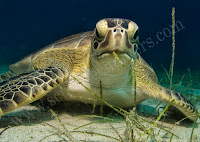These are the points of interest for anyone considering this as their rebreather unit of choice or investing in a second CCR.
The Pathfinder is made by the same company that makes the Megalodon rebreather, Innerspace Systems Corp (ISC). As such, it undergoes the same rigorous 3rd party testing as the Meg giving you the assurance of its build quality, durability and reliability. Let's face it, when you put your faith in a machine, you want one with the reputation these units have.
 Seeing the Pathfinder, you can see the quality of the unit and all in miniature too.
Seeing the Pathfinder, you can see the quality of the unit and all in miniature too.Standing just 16 inches tall, the Pathfinder is around 10kgs lighter than the Megalodon making it a perfect rebreather for the smaller CCR diver or those who travel a lot.
Divers can still use the Loop and Lungs from the Megalodon unit and there are still 2 independently run sets of electronics.
However, the system used in the Pathfinder is completely modular with a "plug and play" design and on top of the head, you will find 3 connectors that are for attaching a primary handset, a back up handset and a heads up display. You can even get a shearwater dive computer that you can plug into these connections, meaning you can have your decompression information synched up to the correct breathing gas in real time.
The ease with which you can connect and disconnect the modular parts makes the Pathfinder ideal for travelling and/or troubleshooting. You won't have to send the entire head back for repair or service, just the part required.
 Removal of the head itself has also been made easier on the Pathfinder with a simplified locking system. Put the head on and twist to lock down using the markings on the side of the can. To remove, twist to unlock and use the handy new handle to lift clear.
Removal of the head itself has also been made easier on the Pathfinder with a simplified locking system. Put the head on and twist to lock down using the markings on the side of the can. To remove, twist to unlock and use the handy new handle to lift clear.So, do all these changes make for a good diving experience on the Pathfinder?
In the words of Winston the Churchill dog... "Oh yes!!!"
The unit is light both in and out of the water, almost like being back on a single tank (God Forbid!). It was suprisingly streamlined and trims out beautifully. As a 5ft 6 guy myself, it is great for those of a smaller stature.
 I can definitely see the benefits for those who want to travel with their own rebreathers, particularly with the baggage restrictions in place on the majority of airlines. The plug and play design makes it a bit easier to protect the electronics in transit also.
I can definitely see the benefits for those who want to travel with their own rebreathers, particularly with the baggage restrictions in place on the majority of airlines. The plug and play design makes it a bit easier to protect the electronics in transit also.If you are thinking to dive deep on the Pathfinder, it is worth pointing out that the factory depth limit for this unit is 60m. This is due to the smaller scrubber that is used and the limitations that incurs. For deeper diving, the Megalodon is still the preferred rebreather to dive.
I love diving my Megalodon CCR but I think there may be room in my heart for a younger model... so santa if you're listening, I've been a really good boy this year


















